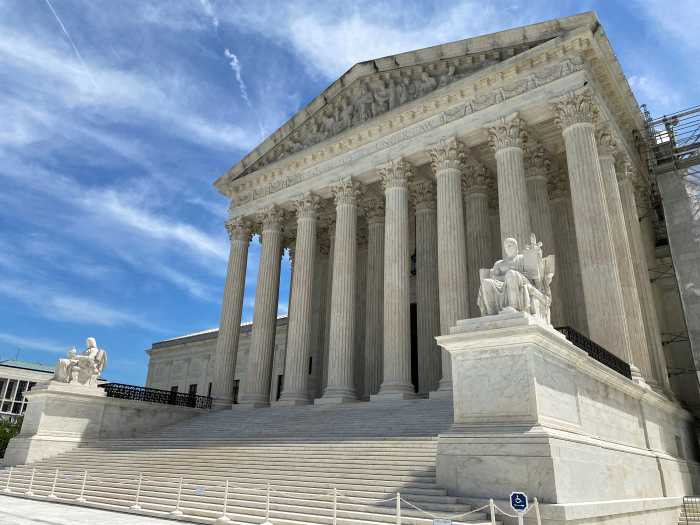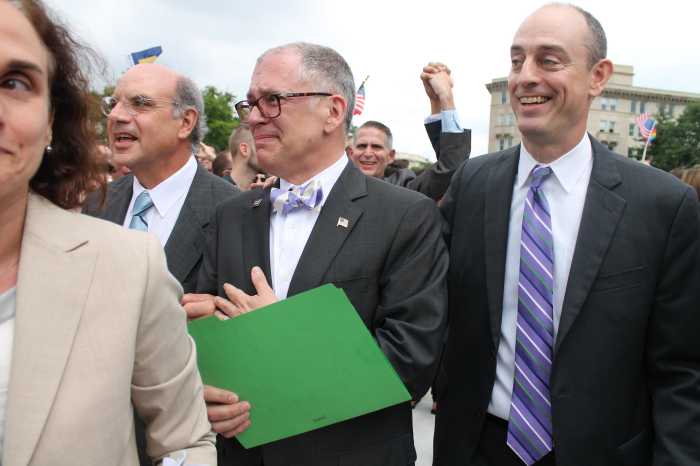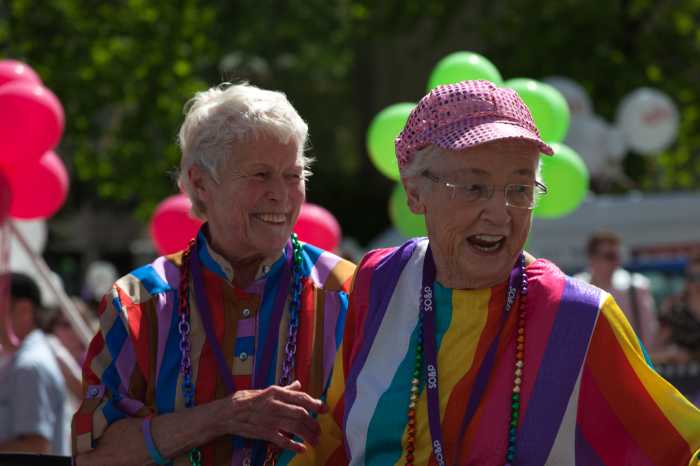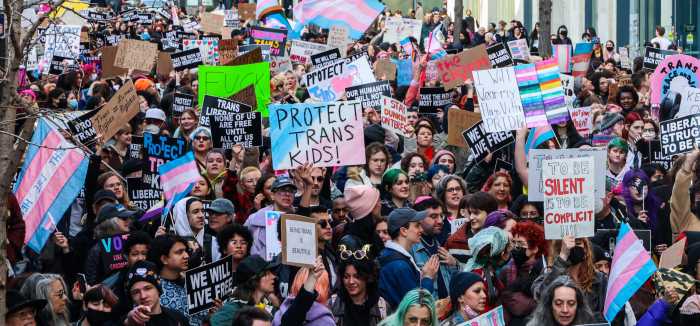From books to booze to pop-up tents to toiletries, tell Amazon what you want and they’ll deliver almost anything — except a straight answer about their outreach to the LGBTQ community through advertising, marketing, and communication.
“We don’t provide details regarding our marketing programs — you can find out more about how we support the LGBTQ community here,” the company’s spokesperson Mackenzie Ritter wrote in an email after a weeks-long effort to get comment.
Follow that link and you’ll find “carefully considered and deeply held” progressive positions on everything from the federal minimum wage to immigration reform to climate change.
It’s the LGBTQ rights section, however, that gives credence to the sticking point discovered by Troy Masters, publisher and editor of the Los Angeles Blade.
Amazon cites its “early and strong support of marriage equality” and ongoing commitment to “advocate for protections and equal rights for transgender people,” noting they “stand together with the LGBTQ community” and crowing about a “perfect score” on the Human Rights Campaign Foundation’s Corporate Equality Index for the last three years.
Standing together with our community, said Masters, must translate into direct engagement, by going beyond providing gender transition benefits to employees or advocating for legislation at the federal and state level — both of which Amazon does.
“I am unaware that they have a marketing or philanthropy footprint inside our community,” Masters said. “They don’t seem hostile, but they are not an active flag-raiser, except perhaps via employee groups at very select events. To me, that kind of marketing is dark marketing — it’s dark because it is not at all inclusive.”
That zinger, Masters added, can be applied to “every other company like them, every company that chooses to rub elbows at our multi-million dollar fundraisers, make a relatively small donation, buy a table at an event, and get their LGBT employees drunk for a night. It’s an offensive strategy, in my opinion, if it is not backed up with general community-wide visibility and outreach.”
“They’re missing the chance to reinforce their already pretty good reputation in the gay community,” said Pride Source Media CFO Jan Stevenson, who, along with her wife, Susan Horowitz, has been publishing Michigan’s weekly newspaper, Between the Lines, for 26 years. “The demographic of the gay community tends to be very close to Amazon’s ideal customer. We’re first adopters. We’re loyal. Even aside from the social aspect of it, I just think it makes good business sense.”
Stevenson recalled attempts at engaging Amazon, which has “a huge distribution facility not far from our offices. When they were doing ‘Help Wanted,’ we approached them about ads, but they didn’t take us up on it.”
Masters has a similar tale of unsuccessful outreach at the local level.
“I attempted to get live-streaming release ads from Amazon video,” he said, “since they own nearly every billboard in Los Angeles and they are doing a great deal of LGBT-specific or themed programming as part of their multi-billion dollar content spree in Hollywood.”
“In 2013, Amazon did the funny Kindle same-sex beach commercial,” noted Todd Evans, president and CEO of Rivendell Media. “In 2018, they did another one for Fire TV featuring two gay men,” and also what Evans called “the lonely ad” — a single-page print ad for Amazon’s wedding registry in the April issue of Out Magazine.
Rivendell places ads for the National LGBT Media Association. The association’s members — a dozen publications including Gay City News, Between the Lines, the Los Angeles and the Washington Blade, and eight other major market newspapers — together reach an estimated 500,000 weekly print and online readers.
The fact that Evans is able to cite three ads that acknowledge LGBTQ consumers, he said, “is what’s different about them. They’re at least doing something, whether it’s to provoke thought or just test the waters, to see what various responses are.”
Evans said he’s surprised Amazon hasn’t done a deeper dive.
“It’s so much easier to carry it to fruition, into LGBT media, where everybody is going to be paying attention to it,” he noted. “There are plenty of other gay publications to advertise in.”
Of the Fire TV commercial, Evans said, “There are plenty of digital networks you could run a TV ad on today. You could even run it on Logo, where you have a super-friendly gay audience… More than most companies, they already target consumers based on buying habits. So they should have an understanding of how important the LGBT consumer is. Like Apple and Starbucks, I feel these are all good companies that just really need to be educated on how to reach large numbers of LGBTs in our specific media.”
One company that got, and continues to get, the message is Absolut Vodka. As of last year, Absolut had spent $31 million on LGBTQ marketing, and donated more than $40 million to gay and lesbian charities.
Unlike Amazon, Absolut vice president Regan Clarke was quick to respond, noting Absolut “was the first spirits brand to publicly support the LGBTQ community, beginning in 1981” — first in After Dark, then in The Advocate.
Clarke called that move, unheard of for its time, “a risky decision for mainstream brands, because taking a stand for equality meant risking backlash from conventional culture. Today, Absolut is proud to stand as a beacon of diversity and inclusivity alongside LGBTQ communities, and continues to push the envelope of cultural progress — while celebrating and supporting the people and actions that have made that progress possible.”
It’s a far cry from the Amazon approach, said Masters, who is confounded by the chasm between knowledge and action.
“They know we are customers,” he said. “They believe in marketing, and they even believe in targeted marketing — yet they exclude us intentionally while also appearing to embrace us. It’s been happening much too long.”
This is the second in a three-part series highlighting large companies that talk the talk, but don’t always walk the walk when it comes to supporting LGBTQ customers. The series is sponsored by the 12 member newspapers of the National LGBT Media Association.



































